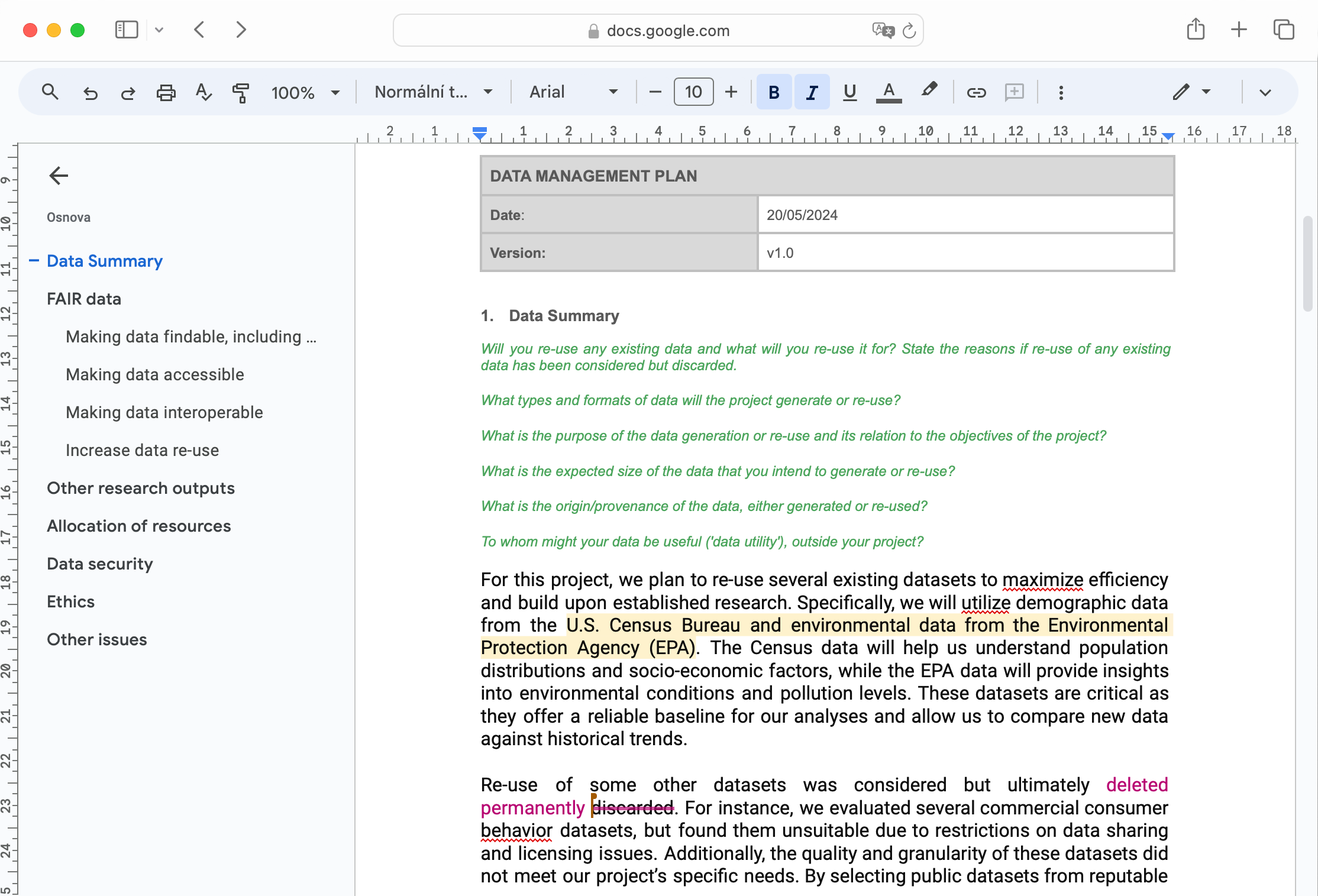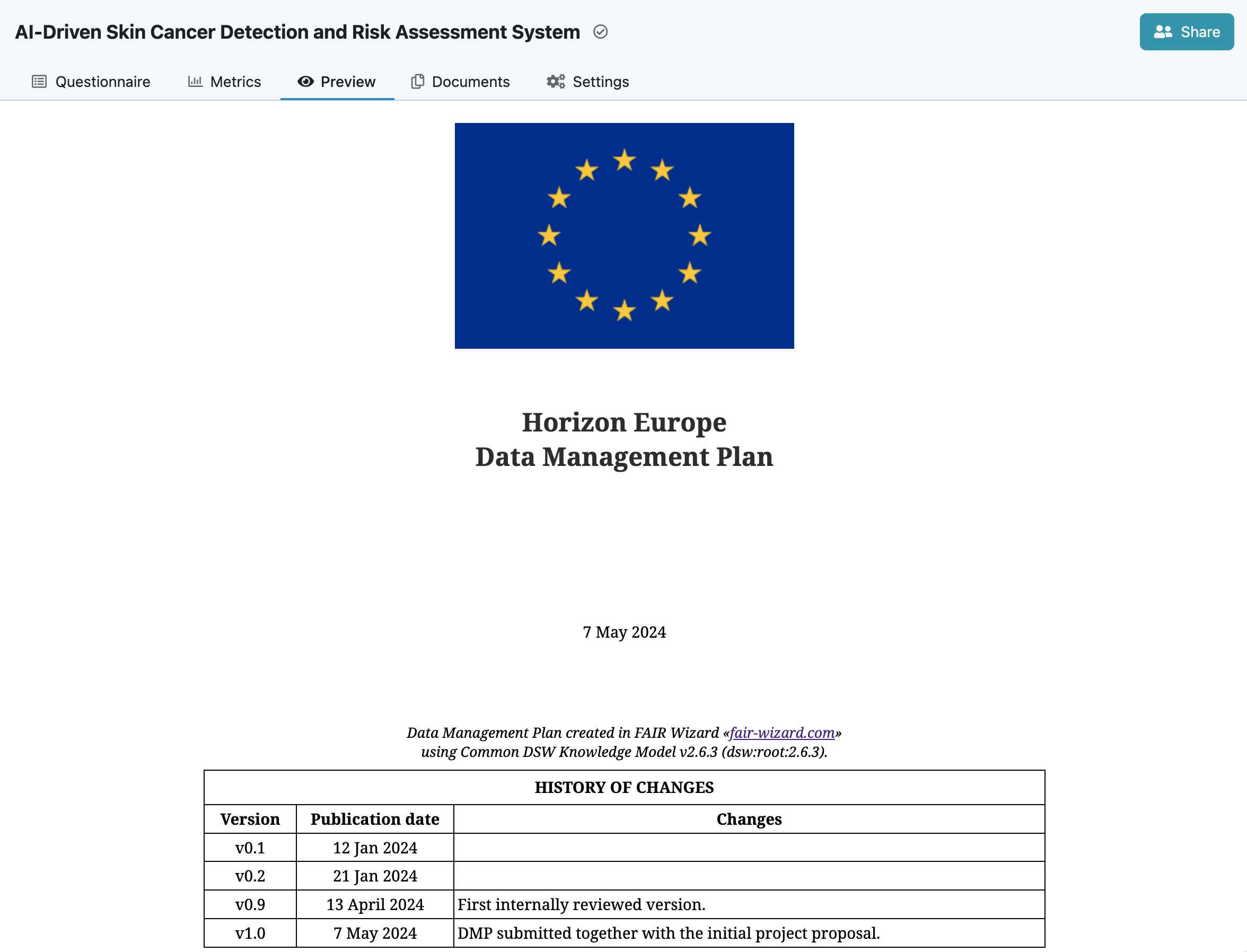Have you ever heard that you should make a data management plan (DMP) or any other output as a living document? If not, you probably missed some the recent requirements coming from research organizations, infrastructures and even funding agencies. They often require such a trait from DMPs but do not clarify how one should achieve this (efficiently) and what it actually means in practice. Let's uncover this mystery and get to know how you can make your documents living effortlessly and to your own benefit.

Having a living document is suggested everywhere, especially when it comes to data management plans that need to capture always current plans and later serve also as a documentation of taken actions. This is clearly formulated already for some time by various institutions, a few examples:
So basically everyone explaining what a DMP is and how it should be done says that is should be a living document. Some of those also recommend to use some tools to work on DMPs; however, it is not clear how to efficiently achieve the goal of DMP as a living document.
Let's break down what a living document is. It's like a document that's continually edited and updated. Therefore, it is sometimes also called evergreen or dynamic document. So, whenever something in it needs updating, you just tweak it, making it newer. The goal? To keep it reflecting what's happening right now. Take your DMP, for example. It should always match what's going on with data management and what are the current plans in your project at any given time.

But why not just stick with regular, static documents? Imagine you make a DMP, save it as a PDF, and call it a day. Problem is, plans evolve. For research projects, that's a given. New tech pops up, rules about data privacy shift, or maybe you need to tweak which data you're focusing on. It's a reality check even funding agencies are catching onto, now asking for updated DMPs as projects roll on. So, instead of making a bunch of revisions, maybe it's smarter to keep your DMP constantly fresh and ready to roll.
When it comes to maintaining a document like a DMP as a living document, several challenges come into play:
Addressing these challenges requires a combination of effective communication, clear processes, and appropriate tools to facilitate collaboration and ensure the document remains accurate, coherent, and up to date.
Bringing documents to life involves implementing strategies and utilizing tools that enable dynamic and collaborative document management. One approach is to leverage cloud-based platforms and software that support real-time editing and version control. These platforms provide users with the flexibility to access and edit documents from anywhere, facilitating seamless collaboration among team members. Additionally, features such as comments, track changes, and revision history enhance communication and transparency throughout the document editing process.

While platforms like Google Docs and Microsoft 365 offer convenient solutions for collaborative document writing, they also have their limitations. One limitation is their tendency to prioritize document editing over efficient collaboration in capturing necessary information for a document. Additionally, the real-time collaboration features of these platforms may lead to version control issues, especially when multiple users are simultaneously editing the same document. Conflicts between changes made by different collaborators can result in confusion and require manual resolution, potentially slowing down the editing process. In the end, you may get a living document but in a bit messy way and not manageable in machine-actionable way (e.g. integrating information coming from external services).
In the context of Data Management Plans (DMPs), specialized tools are available to address the unique challenges associated with maintaining living documents in research settings. These tools offer functionalities tailored to the specific requirements of data management and compliance, such as data categorization, metadata management, and version tracking. By providing templates, guidance, and compliance checks, these specialized tools empower researchers to create and maintain comprehensive and up-to-date DMPs efficiently, ensuring adherence to funding agency requirements and best practices in research data management.
Another approach to bringing documents to life involves the use of smart questionnaires coupled with automated document generation. This method streamlines the process of gathering information and creating documents efficiently and accurately. Smart questionnaires are designed to elicit specific details from users through guided prompts and tailored questions, ensuring that all relevant information is captured effectively. By providing proper guidance within the questionnaire interface, users are directed to input the necessary data, reducing the likelihood of omissions or inaccuracies.
Once the questionnaire is completed, automated document generation tools utilize the collected information to generate the desired documents. These tools can be programmed to generate documents in various human-readable or machine-actionable formats, such as PDF, Word, HTML, JSON, or RDF, based on predefined templates and formatting rules. By automating the document creation process, organizations can save time and resources that would otherwise be spent manually compiling and formatting documents. Moreover, automation reduces the risk of human error, ensuring consistency and accuracy across generated documents.

This approach offers several advantages, including increased efficiency, reduced administrative burden, and improved document quality. By leveraging smart questionnaires and automated document generation, organizations can streamline document creation processes, enabling faster turnaround times and enhancing overall productivity. Additionally, the guided nature of smart questionnaires helps users provide comprehensive and relevant information, leading to more thorough and well-structured documents. Overall, this approach represents a modern and efficient way to manage document creation, combining technology and automation to simplify complex tasks and improve workflow efficiency.
In summary, there are several approaches to harnessing the advantages of living documents. Regarding Data Management Plans (DMPs), one method is to adopt a DMP template provided by a funder and convert it into an online document using platforms like Google Docs or Microsoft 365. This allows for collaboration, tracking changes, versioning, and commenting, offering versatility across various document types. However, this approach has limitations such as poor guidance, inconsistencies, and a lack of machine-actionability.
Alternatively, specialized tools like the reviewed DMPonline, RDM Organizer, or DMPTool offer a different solution. These tools transform a DMP template into a web form with text fields (and sometimes checkboxes). While they provide some guidance, they essentially replicate the process of writing a document into separate text fields, which limits machine-actionability and struggles to adapt to changes in guidance or templates.

On the other hand, FAIR Wizard offers a unique approach. It provides a smart questionnaire that can be customized by data stewards and experts directly through the user interface. Researchers are guided and interviewed through the questionnaire for their projects, with options to select and provide additional information as needed. This process is versioned, collaborative, and allows for comments and notes. Integration with other systems enables automation of answers, and the generated documents can include various types such as DMPs, DPIA documents, or internal project reports. When the questionnaire structure evolves, projects can be seamlessly migrated to newer versions. That all is making them truly living documents that deliver benefits while reducing burdens.